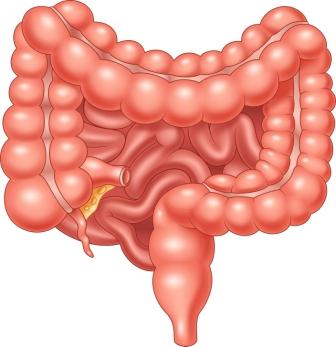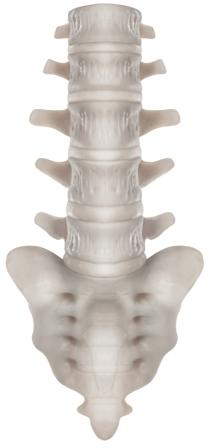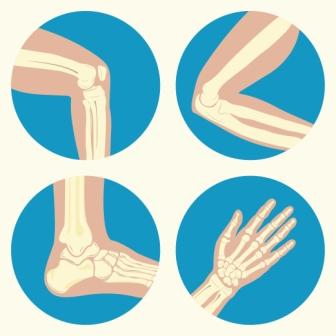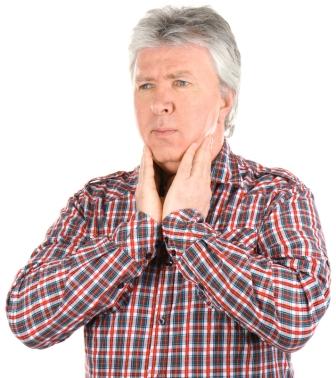Mother nature is the epitome of evolution and adaptation — from amazing creatures to species, she never stops to warm the cockles of our hearts.
Similarly, humans (a part of nature) have known for a long time adapting and improvising. Humans are indeed a mark on evolution, and our bodies work excellently even without some vital organs.
For example, you can live with a half brain, sure that sounds like a nightmare to begin with, but it is true nonetheless.
Source:- scientificamerican.com
But that’s not the concern for today’s skull session, and I’ll leave that for another day. Coming back to a pertinent point, have you ever wondered why some organs seemingly don’t have any real purpose rather than kick up a fuss?
These body structures and organs that seem to have no use in these modern eras — had a functional purpose in our ancestor’s bodies. That’s what vestigial organs are; they were evolved during our ancestors period out of necessity (as the saying goes, “necessity is the mother of invention”) and now are just lying in our bodies without any actual functioning.
The idea of carrying these inutile relics in our bodies have influenced many scientists and people. These useless or vestigial organs are the remnants of working organs that once our predecessors had.
They are an excellent way to reminisce about our ancestral life. So I have jotted down the list of some vestigial organs in our bodies with no actual purpose but to flaunt.
Introduction to Vestigiality
Life is a capricious process, and here & there, our organismal structures depend on evolution and development — the two top stages of biological change.
Vestiges originated from the Latin word “Vestigium”, meaning footprint”, explains the traces of antecedent state. Just like footprints, vestiges provide an impression of something that once existed but is no longer present.
Speaking in biological terms, they reveal prior evolution and development situations, which are imperative to understand the past as well as our ancestors.
So what are vestigial organs?
According to standard definitions, vestigial organs are no longer functional and have lost their functionality or are about to lose. Vestigial organs were body structures that were functional and developed in the past but now have lost most of their functionalities.
Many evolutionists postulate that these organs were beneficial in our ancestor’s body or species, but now they are phased out from modern species.
Famous Naturalist “Charles Darwin” called them rudimentary.
These organs appear in bone, skin, structure in other parts of the body, or even behaviour that is rendered useless as they don’t have any significant bodily function.
However, these organs can cause impediments and troubles as they are susceptible to infections and struggle to adapt.
That said, understanding and exploring vestiges in species help to present a point of historical reasoning that emphasises the way we reason from the past.
It additionally assists with drawing essential differentiation among the development and evolution of species that are frequently neglected.
Besides that, understanding vestiges also aids in transitioning our view of static anatomical genes and structure to a more precise outlook of species while perpetually discovering the development aspect.
History of Vestigiality
Vestigial structures have been observed in animals and humans since ancient times. And these speculations were understood way before the “Darwinian Evolution” (https://en.wikipedia.org/wiki/Darwinism).
Darwinian Evolution offered a firmly accepted explanation about the vestigial organs and their non-functionality. However, vestigiality, as mentioned earlier, was long observed before the theory came into a consensus.
An excellent example of this is — in the 4th century BC, Aristotle shed light on vestigial organs, albeit the term did not exist. He commented on his book “History of Animals” about the eyes of the moles that he considered to be vestigial and mentioned it “Stunted Development”. The reason is that moles can barely see and are seldom in sunlight, so the point of having eyes doesn’t make sense.
Though these vestigial organs don’t make sense, these rudiments have not been entirely removed as mother nature will leave vestigial organs even though they are redundant, but played an imperative role in other species of the same family — says Étienne Geoffroy Saint-Hilaire, a french naturalist.
Charles Darwin was acclimated with the concept of vestigial organs in the human body, even though the term was not coined at that time. He noted them in his book “The Descent of Man ”.
His theory (also known as Darwinism) also mentioned how organisms developed and appeared through slight inherited variations that incremented the species’ ability to survive, adapt, and reproduce. This is what he called “Natural Selection”.
Natural Selection and Theory Of Evolution
In his book “The Origin of Species”, Darwin stated that all the species come from a common ancestral origin and from that, they expanded. The species that are better adapted to the environment could reproduce successfully. Their offsprings would, in turn, reproduce successfully and create ways for new generations.
This theory had two sides to coin — one being the evolution that I mentioned above, and the other is the polar opposite — extinction. Meaning the species that could not adapt to the environment’s needs scarcely reproduced, in most cases, disappear.
Therefore, the species that evolved better and adapted better had their characteristics passed on to their generations. Charles theorised how pressure and needs of the environment cause ceratin traits of the species to pass on to the offspring.
Subsequently, the cumulative accumulation of these traits would make various species be made after some time. That would clarify the presence of vestigial organs in humans and other species because the same logic can be applied to organs that were once useful but do not have a practical use within the species that are carrying them.
Now the extinction logic will also be applied to our vestigial organs, meaning the redundant organs will start to disappear soon. You can expect some organs that’d be not in the human’s body in the future as they keep evolving. This process is called involution, where certain body parts shrink.
Vestigial Features of the Human Body
Phew, that explains a lot about the previous evolution theory and how it proceeded. Now let’s finish what we started.
There is an ongoing debate about the various vestigial organs in the human body, and they are expected to be around 180. We cannot know for sure till the organ has wholly lost its functionality.
That said, we have shared all the organs and behaviours that are scientifically proved to be vestigial.
Appendix

Whenever there are vestigial organs mentioned, the appendix always tops the list. This is because this organ has been notorious for causing trouble. The appendix is the small tube of tissues that joins the junction of the small and large intestine.
The appendix’s function was imperative in our plant-eating ancestors as they had to digest tough plant-based food. Therefore, the primary purpose of the appendix is to aid in the digestion of diets that are primarily related to herbivores.
It breaks down the cellulose consumed from plant-based food. Since our diets have changed, the appendix does not help digest — meaning useless. Therefore, it is a small vestigial organ that is prone to infection.
However, many studies point out that the organ is not a complete waste and can help preserve beneficial bacterias.
Source:- sciencedaily.com
Though it has a small beneficial function, once the appendix gets infected, it must be removed. It can cause excruciating pain and can prove fatal if not treated if it perforates or bursts.
Even though scientists suggest that it is a safe house for good bacterias, anyone who has undergone and paid for an appendectomy will disclose to you that its actual function is filling the pockets of the surgeon who removed it when it gets tainted.
Generally, people who have removed the appendix have never shown any adverse effects, and their lives just keep going.
Paranasal Sinuses
Our sinuses are just air pockets that live inside our faces. There is a heated stigma about the biological role of sinuses, but there is lacking consensus to prove their actual purpose. One thing we can agree on is — sinuses are good at providing a headache and getting infected.
Hence, not so useful after all. However, sinuses still used to help our ancestors. These sinuses are considered to line up with odour receptors that provide a heightened sense of the olfactory.
Therefore, it aided them with survival and hunting, which makes sense. That said, no one understands or knows why these troublesome cavities are still in our faces, perhaps to warm and moist the air we breathe or to make the head feel lighter.
Wisdom Teeth

There is no wisdom that you get when these teeth grow, and the name was formed as they often make their grand entry in later stages of life where you are no longer a child and wiser, hence the name.
These teeth are intruders from hell that lack the room to grow. There ordinarily isn’t any space for them to drive their way into your mouth, yet they do it in any case (regardless of whether you ask them not to). When they grow, it is usually related to the discomfort that becomes a pain as they keep growing.
Good at breaking the banks, these teeth keep offering a nagging pain that is impossible to live with, and you cannot complain to anyone either. So you have to visit a professional whom you’ll pay to remove some discomfort that you never asked for in the first place.
So why are they there? What was the origin? Well…
It has to do something with our jaw size; as our heads and jaws are smaller than our ancestors, the teeth are growing in a space that cannot accommodate them. These teeth also help our ancestors eat roots that were their primary diet, demanding solid teeth — the more, the better.
However, these teeth are prone to the cavity and require better dental hygiene. So you better start brushing more if you’ve got some wisdom teeth to deal with.
Coccyx (Human Tail)

Coccyx or sometimes referred to as the tail bone is another vestigial organ that is a vestige of a mammalian tail. It is the remaining parts of a lost tail. Generally, almost every mammal on this planet used to have a tail at some point. In the case of humans, we have it while we are in the womb at between the stage 14 and 22 of embryogenesis. If you inspect it closely, you can see a tail type structure that is absorbed later.
Ernst Haeckel, a German zoologist, proposed a theory of recapitulation or also known as embryological parallelism. It expressed the embryo’s development to the adult parallel of the organism’s various stages from an original state (ancestral) to the current one.
Source:- https://en.wikipedia.org/wiki/Recapitulation_theory#Haeckel
The tail has been the mode of communication and balance in many creatures, and in some cases, it is also prehensile — for example, monkeys. That said, as humans evolved and started to walk straight, the tail was useless for balance, and eventually, this vestige disappeared.
The tailbone is the last remains of our ancestors and is probably not used in any logical way. It is just leftovers. However, if you’ve experienced slipping on banana peels, you can understand the futility of the situation.
There are many cases where this tailbone has been removed from the patient, and there have been almost no side effects observed.
Ear

No, you got the wrong idea, not the whole ear. That said, the human ear is made with entire groups of muscles that are similar to the monkeys, but monkeys use them to move to stay vigilant and pick up danger or search for their prey.
Similarly, many other animals, such as cats, can swivel their pointy ears to track sound.
It is just staying still — pointing that they have lost their primary function in the case of humans. Our primates used to use these muscles as they were not able to move their heads horizontally. Since we can effectively and quickly move our head to hear and capture any sound, we don’t need these muscles.
We cannot move our ears, at least the majority of us. However, 10 to 20 % of humans can wiggle their ears, making us look like an imbecile (sorry, I just envy you XD). That said, in the future, you’ll not be able to flap your way through as it will disappear from the body.
Nictitating Membrane

The plica semilunaris is the small fold of tissue situated on the corner of your eyes inside. This plica semilunaris is the vestigial remnant of a nictitating membrane found chiefly in reptiles, birds, and amphibians.
The function of this organ is to clean the eye and moisturise it and protect it from dust. In some species, the layer of this third eyelid is transparent, which allows them to see underwater or underground — tortoises, for example.
Unfortunately, the loss of this plica semilunaris is unknown, but it sure helps keep proper tear drainage and moves the debris away from the eye. If you have ever walked on a windy beach, you’ll understand what I am saying.
However, the idea of self-cleaning eyes sounds fantastic.
Mystery Tendon

Commonly known as Darwin’s tubercle, it is an unusual vestigial feature that almost everyone possesses. There is a way to check this feature, simply make a fist tightly and observe the raised tendon running in the middle of your wrist.
Around 85 to 90% of people have an extra tendon. The tendon connects the palmaris long muscle, which most of us have, but it isn’t practical. 11% of people don’t have this muscle, but that doesn’t mean the ones who have it possess better strength or grip.
The palmaris’ long muscle is far more conspicuous in other mammals, specifically those that rely more on locomotion, such as monkeys and lemurs. If you were into rock climbing and martial arts, perhaps, especially MMA, you’d appreciate this muscle.
That said, the muscle is considered so excessive that many surgeons remove it entirely and use it somewhere else.
Pyramidalis Muscle

This muscle is located in the lower abdomen between the rectus abdominis muscle and muscle sheath. The pyramidalis muscle can differ in size and number, where some individuals have one, two, or even none.
These muscles are present in about 80% of the human population. It is the abdomen’s anterior wall muscle, so it is believed to tense the linea alba. The muscle has been a source of stem cells for various surgeries, and it’s used as a surgical landmark.
However, many scientists classify it as a vestigial muscle, and there is no possible function other than increasing positive abdominal pressure.
Arrector Pili
Goosebumps are the result of arrector pili doing its work when you are facing fear or are in a dangerous situation. The primary function of these body hairs was to retain heat and stay warm, as our ancestors were furry creatures.
Besides that, the body hairs, when erected, made the ancestors look bigger and more threatening and thus were saved from being eaten. Since we don’t have much hair left, these tiny hairs are pretty much useless and will cease to exist in the future.
Toes

Okay, before you give me that weird look, hear me out. Toes, though pretty useful, will cease to exist in future as well. It is because humans balance is gradually shifting towards their inner feet and toe thumb. Therefore, due to that, your pink toes are dwarf (remember, involution?), and when the balance keeps shifting away from the toes, they’d be simply fused.
That sounds disturbing, but don’t worry. It isn’t going to happen in the foreseeable future, rather a few decades.
Tonsils

Tonsils are considered to be the body’s front line of protection against ingested or inhaled pathogens. However, they are notorious for being like the appendix and joining the opposing team during the conflict of infection.
The tonsils are prone to infections and cause more severe health problems if left untreated. The benefits of the immune response of tonsils are easily prevailed over by simply removing them first; this is what scientists are constrained to think as the organ gets dangerously infected.
Male Nipples
Wait, what? Yes, that was my first reaction, but now that I have mentioned it — it does make sense. The male nipples don’t have any definite function other than decoration. With that in mind, male nipples are vestigial but in a subtle way.
You see, they are not some leftovers of our so-called ancestors; instead, they are embryological development. To understand more about this, you’ll have to travel way back, when you were a fetus.
All the fetuses in the womb start life as females. When the XY chromosome is present, the fetus will produce testosterone hormone and transform into a male, and the X chromosome will come first before the Y, but the nipples have already formed till then.
They can’t produce lactate and are prone to breast cancer (yes, in males). Over time, the size of the male nipple has been shrinking, and many biologists opine that they would vanish in the future, so there’s that.
Well, Not Just Organs, But Behaviour Too!!
That does sound ridiculous, but it is true. Vestiges do not just exist in the form of the organ but also as behaviour, reflexes, and even chemical change processes. Evolutionary remnants that appeared in our body can also affect our behaviour.
You can understand by observing goosebumps; though they are considered vestigial organs, their response is a vestigial behaviour triggered when you sense fear or cold.
Palmar Grasp Reflex
Have you ever tried to take candy from a baby? Sure it sounds easy, but the reality could not be far, and it is more challenging than you’d anticipate. Infants surprisingly possess a firm grip, and they use something called Palmar Grasp Reflex.
You can experience this reflex by simply putting your finger on the palm of a baby, and it will immediately hold your finger. The baby will reflexively hold your finger with a strength that is almost superfluous to its size.
According to a study, scientists found that about 37% of babies can handle their weight while holding on to a rod. So what is the science behind such muscular strength? Well, like goosebumps, it boils down to fur.
During our ancestors’ time, all people were covered with a lot of body hair or fur. So these babies used to cling to their mothers back by gripping their fur, while the mother had free arms for forage or climbing.
You’ve probably seen this in other mammals like anteaters, for example. Infants holding onto their mother is a very natural phenomenon through primate species.
The reflex also extends to the feet and is called plantar grasp reflex, where the baby’s toes are curled, reminiscent of chimpanzees.
Yawning

Yup, yawing is considered to be another vestigial behaviour that is not yet fully understood. However, scientists claim that it represents a change in the environment (low oxygen) and alertness (waking up or tired).
It is a chemical change in our body that is contagious, as just thinking, seeing, or even hearing triggers the event. The contagious part of this behaviour intrigues scientists more, as it indicates some sort of communication. Since there is no actual communication significance of yawing currently, it is referred to as vestigial behaviour.
According to a school of thought, it is the medium of communicating about changing environments or even internal body situations. If we think about it, then the contagious nature makes sense, as it would be about communication within animal groups, perhaps to synchronise the behaviour. And that explains the yawning nature in humans, as it is an ancient mechanism that has lost its functionality, hence vestigial.
PS:- I yawned a lot while writing this section, seriously. Just think about it, and I am sure you’ll yawn as well.
Yawning is a behaviour that occurs in humans and many other animals, where the unconscious brain and the body interact, albeit the mechanism is not yet understood.
For many years it was believed that yawning is due to the lungs sensing low oxygen levels and yawns served to bring in more air. However, we know that it is not true as lungs do not sense low oxygen levels.
Hiccups
Hiccups are also considered to be vestigial, albeit their purpose has insinuated scientists for a long time. To reveal the mystery of these hiccups that don’t have a convenient purpose, we have to go into our past.
One promising species to scrutinise is our amphibian ancestors, particularly tadpoles. The hiccup is a sharp contraction of the muscles we use for inhalation, also known as the diaphragm muscles.
A tadpole has both lungs to breathe air and gills to breathe water. To breathe, it takes water through its mouth and then forces the water through gills by closing the glottis — resulting in a hiccup-like action.
You can observe this in many other primordial air-breathers like gar, lungfish, and other amphibians with gills.
Another point that coincides with human hiccups is the electrical signals in our brains that trigger these hiccups. They are activated by some signals generated in our brains. However, these signals are the same emitted in the brains of amphibians that regulate their gills’ motion.
Therefore, our brain inherited from such an amphibian ancestor still sends out such signals that are just the same as gill breathing.
Be that as it may if hiccups are the relics of genetic codes passed by our amphibians antecedents. Does that mean they don’t have any beneficial purpose in humans, albeit they persist since our forefathers came on dry land for about 370 million years?
Well, that’s a story for… another day!!
Cessation
Be it inside or outside of our body, the history of our evolution is marked throughout our bodies. By understanding our form and function, we can have good knowledge about our past and where we’ve come from.
From our precedents to Darwin to modern humans, vestigial organs are here with us. That said, these things just barely scratch the things going in our DNA. As far as we might be aware, Mother Nature may very well send us all the way back to the trees.
Vestigial organs are a great way to reminisce about our ancestors, but sometimes it also surprises, that if there was one common ancestor, who was he? Or perhaps it?
I guess that’s a little conundrum, I will leave for you guys. Thanks for reading till here, and we’ll meet soon.
Till then, stay safe and keep reading!!
References:
- 7 Vestigial Features of the Human Body
- 5 Useless Body Parts
- Vestigial organs (scienceoxford.com)
- West-Eberhard, M. J. (2003). Developmental plasticity and evolution.
- Oxford University Press


